The Anatomy and Life of a Bee
Brief description
Bees, belonging to the order Hymenoptera and family Apidae, are small, winged insects that have captivated both scientists and nature enthusiasts for centuries. The most well-known species, the European honeybee (Apis mellifera), is a pinnacle of social organization. A honeybee colony operates as a superorganism, where individual roles contribute to the collective survival of the hive. These fascinating creatures are intricately designed for their roles within the ecosystem. Their six legs, two pairs of wings, and compound eyes allow them to navigate complex environments with precision.
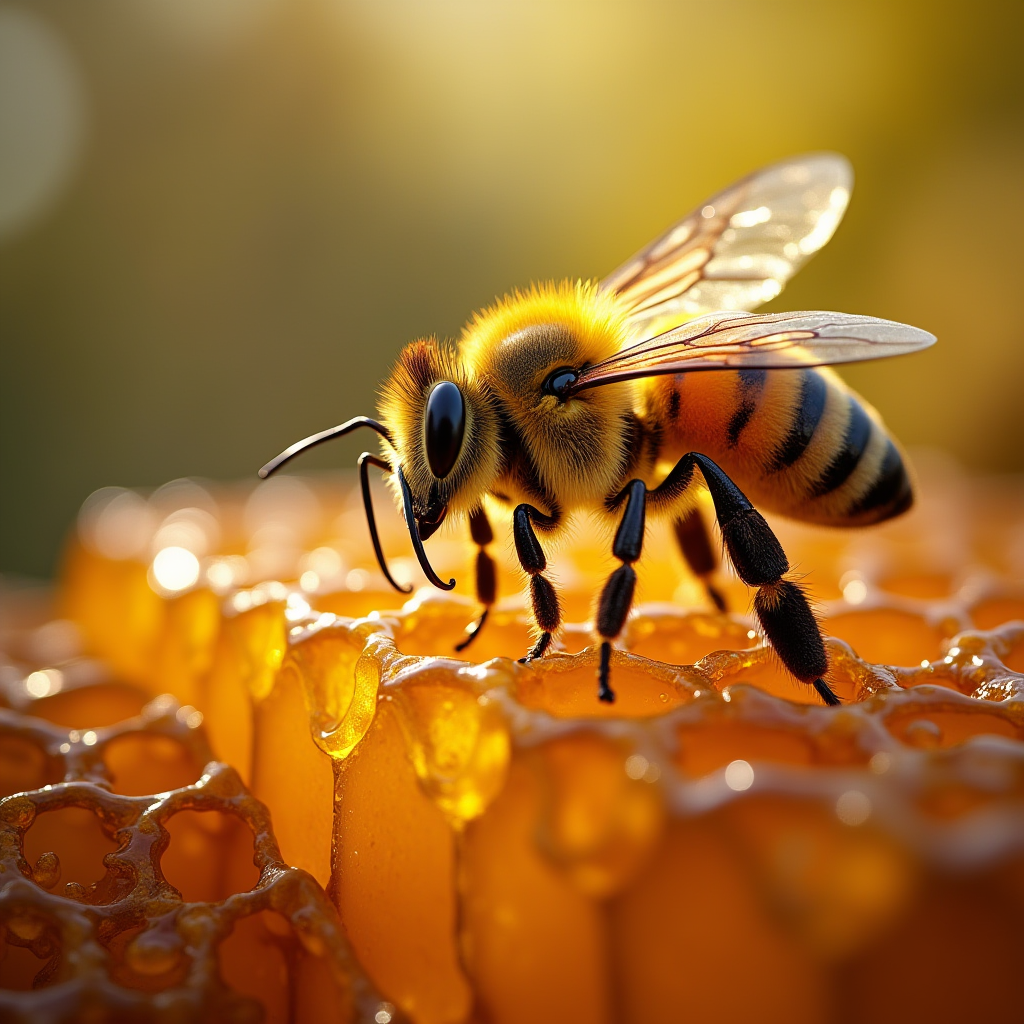
At the heart of their success lies their social structure. The queen bee, the matriarch of the colony, has a lifespan of up to five years and can lay up to 2,000 eggs a day at her peak. Workers, numbering in the tens of thousands, undertake diverse roles, ranging from nurses caring for larvae, to foragers scouring the countryside for nectar, to guards protecting the hive’s entrance. Drones, the male bees, live shorter lives but play the critical role of ensuring the propagation of future colonies through mating.
Communication system
The communication system of honeybees is equally remarkable. The waggle dance, a choreographed movement performed by foragers, conveys detailed information about the location of food sources, including distance, direction, and quality. This unique behavior demonstrates their ability to process and share complex information, a trait that has long fascinated researchers.
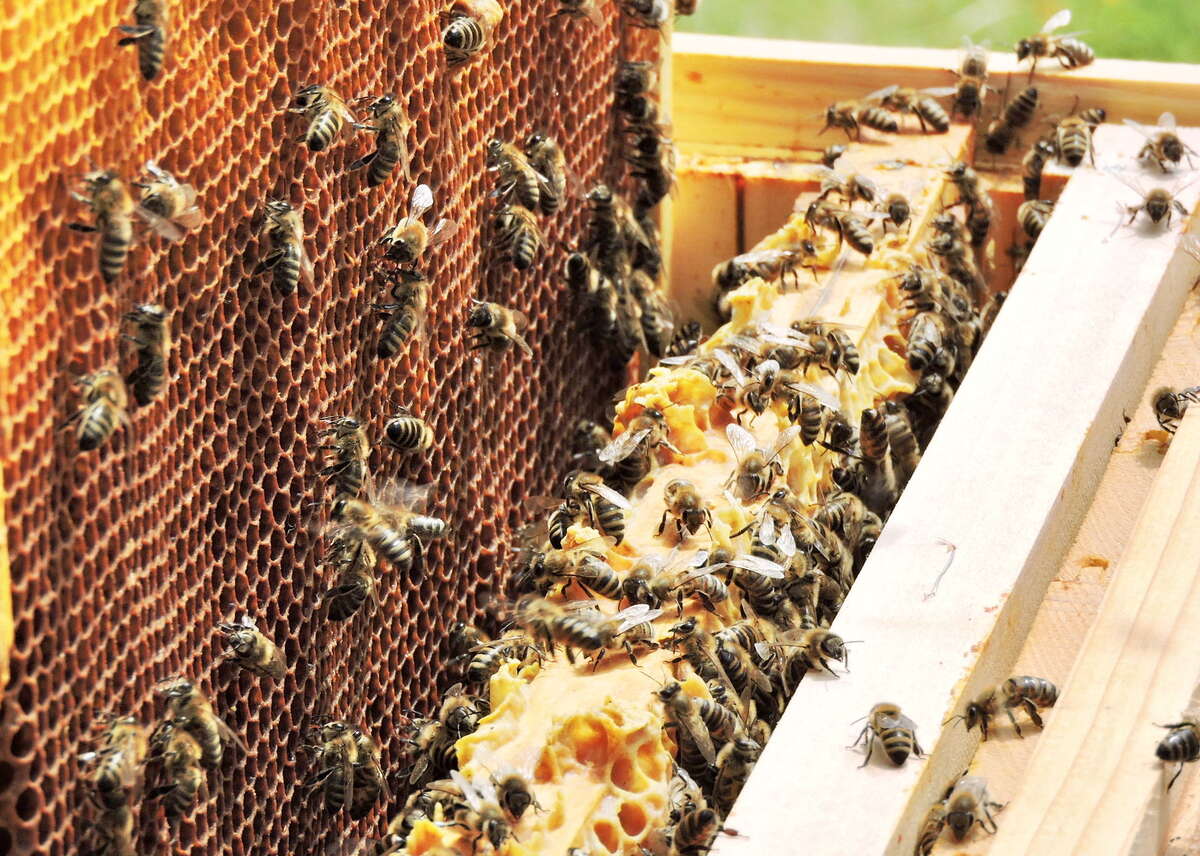
From an evolutionary perspective, bees have coexisted and coevolved with flowering plants for millions of years. Their proboscis, a specialized feeding structure, enables them to extract nectar from even the most intricate flowers. Their body hairs, finely adapted to trap pollen, ensure that their pollination efforts are both efficient and far-reaching.
Lifecycle of a bee
The lifecycle of a bee, from egg to larva to pupa to adult, unfolds entirely within the protective confines of the hive. Each stage is a marvel of transformation, supported by the collective efforts of the colony. The wax comb, painstakingly constructed by workers, serves as the foundation for raising young and storing food. The precision of its hexagonal structure maximizes strength and storage efficiency, a testament to the architectural genius of bees.
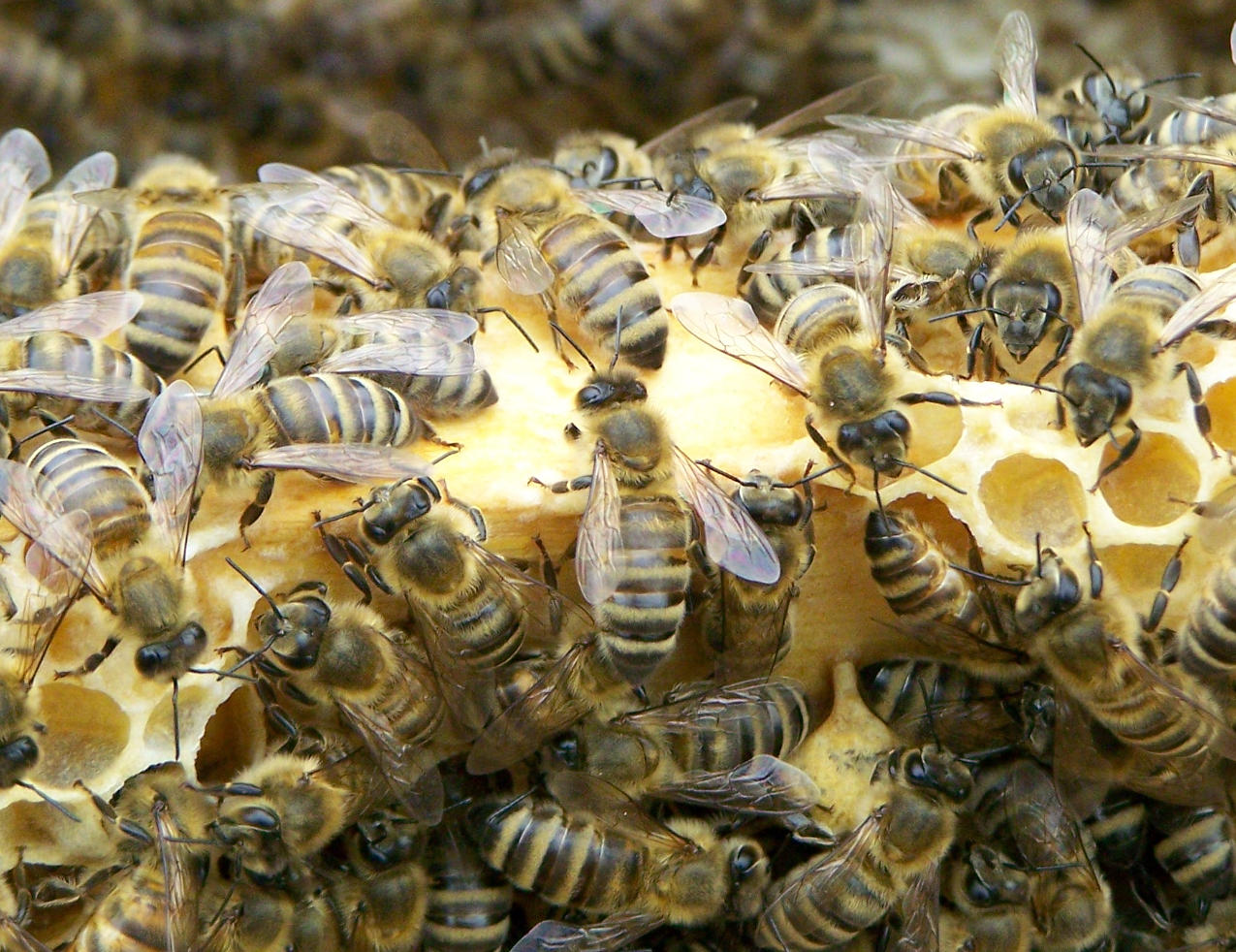
In the broader ecological context, bees play an indispensable role. Beyond their work as pollinators, their behavior and survival reflect the health of ecosystems. A thriving hive is often a barometer of environmental stability, while declines in bee populations signal broader ecological imbalances. Their existence serves as both a reminder and a call to action to preserve the interconnected web of life that sustains all living things.
Bee roles
Queen
Each bee—whether queen, worker, or drone—has a specialized role, forming a highly organized and interdependent society. The queen, larger than her colony mates, is not only the sole egg layer but also the pheromonal heartbeat of the hive, guiding its behavior and cohesion. Her royal duties are demanding, as she lays up to 2,000 eggs a day, ensuring the future of the colony. Workers, sterile females, tirelessly handle all aspects of hive maintenance. They are the unsung heroes, fulfilling roles such as foraging for nectar and pollen, producing wax to build comb, regulating hive temperature by fanning their wings, and nursing the queen’s offspring with royal jelly or honey.

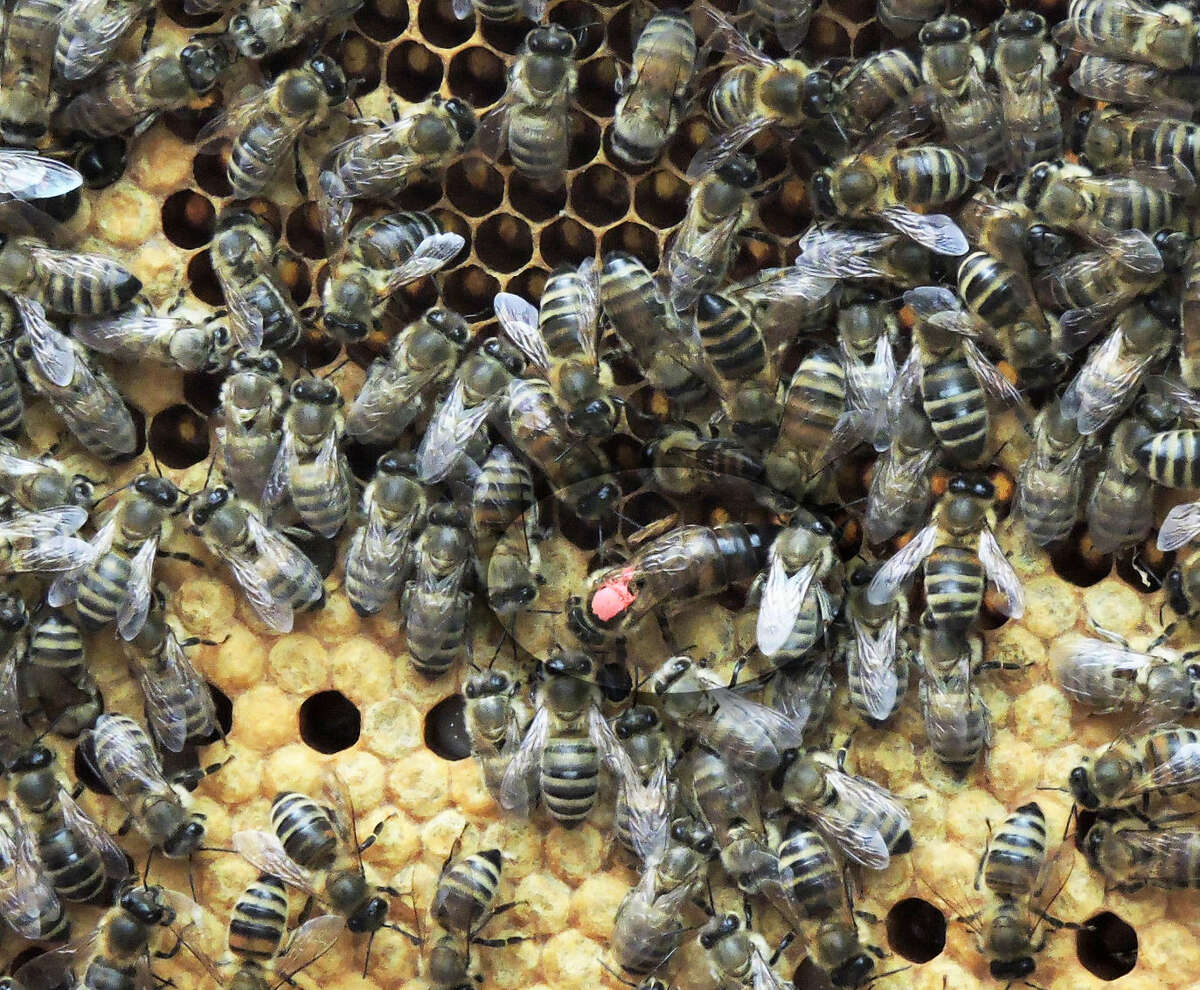
Drones
Male drones, despite their brief lifespans, perform a singular but critical function—to mate with virgin queens from other colonies. This act of reproduction comes at the ultimate cost, as drones die shortly after mating. Yet their sacrifice ensures the genetic diversity and vitality of future colonies. The hive operates as a finely tuned machine, with each member’s contribution vital to its survival. It is a system built on collaboration, resilience, and purpose—a reflection of nature’s genius.
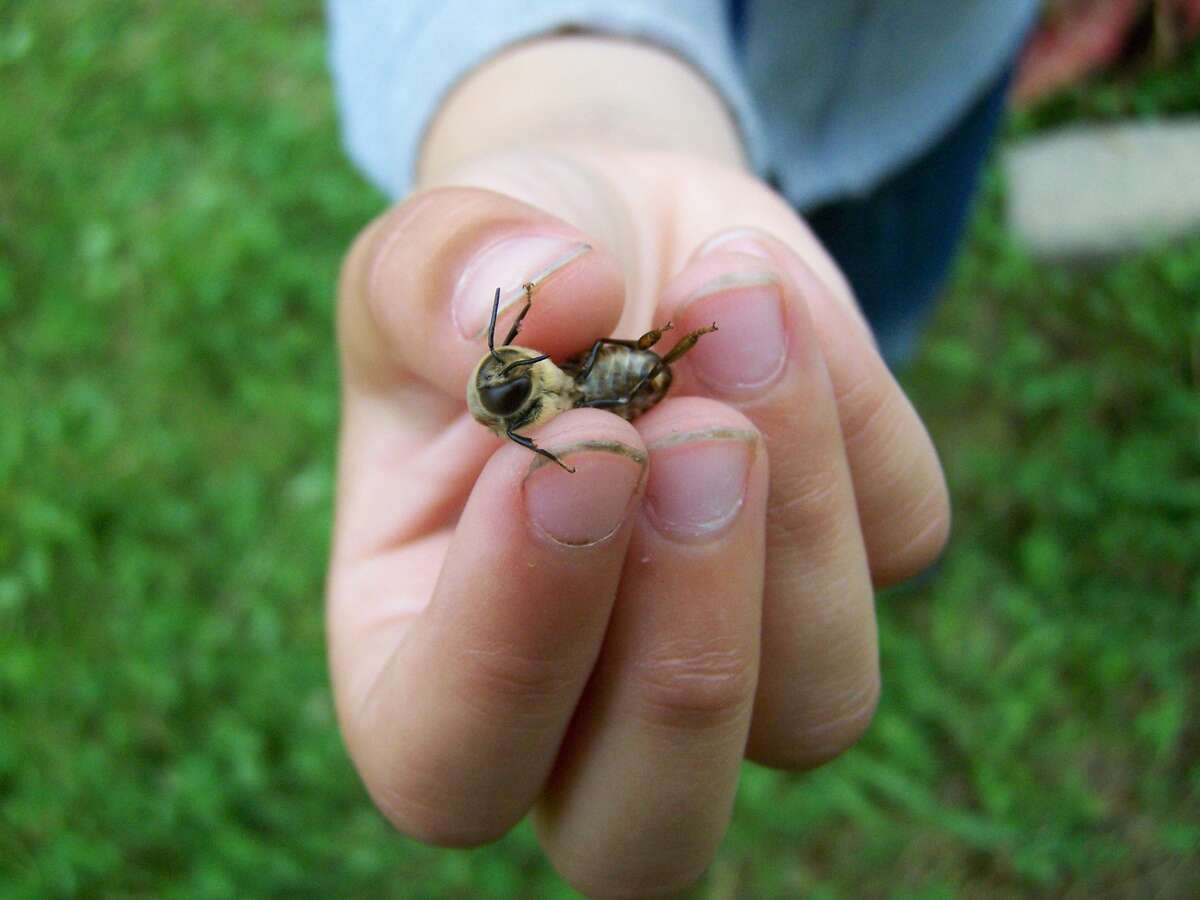
Worker bees
The anatomy of bees is uniquely suited to their ecological role. Their proboscis, a highly specialized tube-like structure, enables them to extract nectar from even the deepest flowers with precision. Meanwhile, their hind legs are marvelously adapted with "pollen baskets" or corbiculae, structures designed to efficiently transport large quantities of pollen back to the hive. These baskets are flanked by stiff hairs that hold the pollen in place, forming golden clumps as the bees diligently work.

Senses
Compound eyes, composed of thousands of tiny lenses, provide bees with a broad field of vision and the ability to detect ultraviolet patterns invisible to the human eye. These patterns, often found on flowers, act as visual guides leading bees directly to the nectar source. The sensitive antennae of bees serve a dual purpose, acting as both sensory organs for touch and smell. Bees use their antennae to detect pheromones within the hive and to sense the chemical composition of plants, ensuring they forage for the highest-quality resources.
Perhaps the most fascinating behavioral trait of bees is their waggle dance. This intricate and mesmerizing form of communication involves a foraging bee vibrating its abdomen and moving in specific patterns. The dance encodes critical information such as the distance and direction of a food source relative to the hive. By aligning their movements with the position of the sun, bees translate spatial information into a shared language that guides others to precise locations, showcasing their extraordinary cognitive abilities and teamwork.